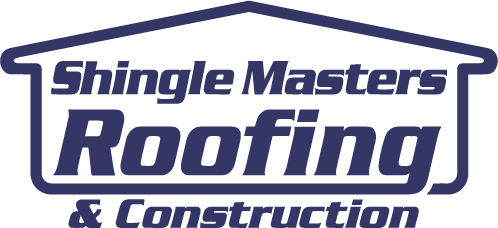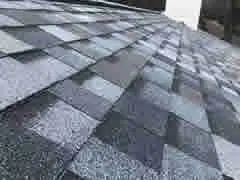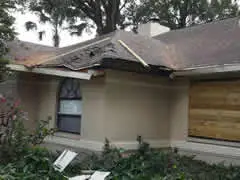The 3 Most Common Types of Hurricane Roof Damage in Tampa Bay
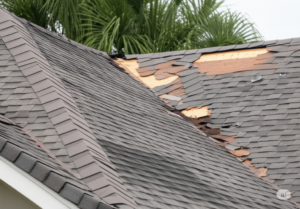
Tampa Bay. Just the name conjures images of sun-drenched beaches, vibrant culture, and the iconic skyline reflected on the shimmering waters of Hillsborough Bay. From the historic brick streets of Ybor City (zip code 33605) to the bustling shops in Hyde Park, life here has a unique rhythm. However, living in paradise comes with its own set of challenges, and for homeowners in Tampa, St. Petersburg, Clearwater, and the surrounding areas, hurricane season is always a significant concern.
One of the most vulnerable parts of any home during a hurricane is the roof. It bears the brunt of high winds, torrential rain, and flying debris. Understanding the common types of damage your roof might sustain can help you prepare, identify issues after a storm, and ultimately protect your property and loved ones. Based on historical data and local roofing expert insights in neighborhoods like Westchase and Seminole Heights, here are the three most common types of hurricane roof damage we see in the Tampa Bay region:
1. Wind Damage: The Unseen Enemy
Hurricanes are notorious for their powerful winds, and even if your property doesn’t experience a direct hit, sustained high winds and sudden gusts can wreak havoc on your roof. This type of damage often isn’t immediately obvious but can lead to significant problems down the line if left unaddressed.
How Wind Damages Roofs:
- Shingle Damage: Wind can lift, crack, curl, or even completely tear off shingles. This is especially true for older roofs or those with improperly installed or damaged shingles. Missing shingles expose the underlayment and decking to the elements, leading to water intrusion. The strong winds experienced near the Courtney Campbell Causeway (zip code 33607) often illustrate this effect.
- Loss of Granules: Even if shingles aren’t completely detached, high winds can strip away the protective granules from the shingle surface. This accelerates the aging process of the shingle, reduces its ability to reflect sunlight, and makes it more susceptible to further damage and leaks. Look for excessive granule buildup in your gutters after a storm as a potential sign.
- Damage to Flashing: Flashing, the metal material installed around roof penetrations like chimneys, vents, and skylights, is crucial for preventing water leaks. High winds can lift, bend, or tear away flashing, creating pathways for water to enter your home. The unique architectural styles found in historic areas like Tampa Heights often feature intricate flashing details that can be vulnerable.
- Structural Damage: In severe hurricanes, the force of the wind can even cause structural damage to the roof deck or trusses, although this is less common in typical Tampa Bay hurricanes compared to direct hits from major storms. However, large trees falling on a roof, a risk in areas with mature landscaping like South Tampa (zip code 33629), can certainly cause significant structural compromise.
Identifying Wind Damage:
- Visually inspect your roof from the ground (never climb onto a damaged roof yourself). Look for missing, cracked, or curled shingles.
- Check for loose or missing flashing around roof penetrations.
- Examine your gutters for an excessive amount of shingle granules.
- Be aware of any new leaks or water stains inside your home, particularly after heavy rainfall.
It’s important to note that even seemingly minor wind damage can compromise the integrity of your roof and lead to more significant problems over time. A professional roof inspection after a hurricane is always recommended, even if you don’t see obvious damage.
2. Water Damage: The Silent Intruder
Hurricanes bring significant rainfall, often for extended periods. Even if wind damage is minimal, the sheer volume of water can find its way into your home through various vulnerabilities in your roof system.
How Water Damages Roofs:
- Leaks Through Damaged Shingles or Flashing: As mentioned earlier, wind damage often creates openings that allow rainwater to penetrate the roof. Even a small missing shingle or a lifted piece of flashing can let in significant amounts of water.
- Saturated Underlayment and Decking: If water breaches the outer layers of your roof, it can saturate the underlayment (the protective layer beneath the shingles) and the wooden roof decking. This can lead to rot, mold growth, and structural weakening. Older homes in areas like Palma Ceia might be more susceptible due to aged roofing materials.
- Clogged Gutters and Drains: Heavy rainfall can overwhelm your gutter system, especially if it’s clogged with leaves and debris. When gutters overflow, water can back up under the eaves and potentially find its way into your attic and walls. Proper gutter maintenance is crucial, particularly before hurricane season.
- Flat or Low-Sloped Roof Issues: Properties with flat or low-sloped roofs, common in some commercial buildings and modern residential designs around the Channel District (zip code 33602), are particularly vulnerable to water ponding. Standing water can eventually find weak spots and seep into the building.
Identifying Water Damage:
- Look for water stains on your ceilings and walls. These may appear as discoloration, dark spots, or even mold growth.
- Check your attic for signs of leaks, such as wet insulation, damp wood, or a musty odor.
- Be aware of any dripping sounds coming from the ceiling, even long after the rain has stopped.
- Inspect around windows and doors for water intrusion, as roof damage can sometimes lead to water running down interior walls.
Water damage can be insidious, often developing slowly and causing hidden problems before becoming obvious. Promptly addressing any signs of a leak is crucial to prevent extensive and costly repairs.
3. Damage from Falling Debris: The Unexpected Impact
Hurricanes generate more than just wind and rain; they also create a chaotic environment where trees, branches, signs, and other debris can become airborne. These projectiles can cause significant and immediate damage to your roof upon impact.
Types of Debris Damage:
- Punctures and Tears: Falling branches or other sharp objects can puncture shingles, underlayment, and even the roof decking, creating direct pathways for water intrusion. The mature oak and palm trees common in neighborhoods like Davis Islands can pose this risk during strong storms.
- Crushing Damage: Larger debris, such as falling trees or large tree limbs, can crush sections of your roof, causing structural damage and widespread shingle and underlayment damage. This type of damage often requires significant repairs.
- Damage to Roof Features: Debris can also damage or destroy roof features like vents, chimneys, and skylights, leaving openings for water to enter.
Identifying Debris Damage:
- After a storm, carefully inspect your roof from the ground for any visible signs of impact, such as dents, holes, or displaced shingles.
- Check your yard and surrounding areas for fallen trees or large branches that may have come into contact with your roof.
- Pay attention to any new noises or drafts inside your home that might indicate a breach in your roof.
- If you suspect significant debris damage, avoid going into your attic until a professional has assessed the structural integrity of your roof.
Debris damage is often the most dramatic and immediately apparent type of hurricane roof damage. However, even seemingly minor impacts can compromise your roof’s ability to protect your home.
Protecting Your Roof in Tampa Bay
Preparation is key to minimizing hurricane roof damage. Here are some steps you can take:
- Regular Inspections and Maintenance: Have your roof professionally inspected at least once a year and after any significant storm. Address any minor repairs promptly.
- Trim Trees and Secure Loose Objects: Before hurricane season, trim any trees or branches that could potentially fall on your roof. Secure any loose outdoor items that could become airborne debris.
- Ensure Proper Gutter Maintenance: Keep your gutters and downspouts clean and free of debris to allow for proper drainage.
- Consider Roof Upgrades: If your roof is old or nearing the end of its lifespan, consider upgrading to more wind-resistant roofing materials. Many newer roofing systems are designed to withstand higher wind speeds.
- Review Your Insurance Policy: Understand your homeowner’s insurance coverage for hurricane-related roof damage.
By understanding the common types of hurricane roof damage in Tampa Bay and taking proactive steps to protect your property, you can weather the storms more effectively and safeguard your home for years to come. Remember, prompt action after a storm, including professional inspection and repairs, is crucial to preventing further damage and ensuring the long-term integrity of your roof.
Table: Common Hurricane Roof Damage in Tampa Bay
| Type of Damage | Cause | Visible Signs | Potential Consequences |
| Wind Damage | High winds and gusts | Missing, cracked, or curled shingles; loose flashing | Water leaks, further shingle damage, accelerated aging |
| Water Damage | Heavy rainfall entering through breaches | Water stains on ceilings/walls; damp attic; dripping | Mold growth, rot, structural weakening |
| Debris Damage | Impact from falling objects | Dents, holes, displaced shingles; damaged features | Direct water entry, structural damage, compromised protection |
Bulleted List: Pre-Hurricane Roof Preparation Tips
- Schedule a professional roof inspection.
- Trim trees and shrubs near your roof.
- Secure all loose outdoor items.
- Clean your gutters and downspouts.
- Review your homeowner’s insurance policy.
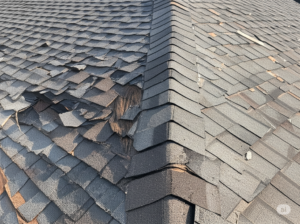
Frequently Asked Questions (FAQ)
Q: How soon after a hurricane should I inspect my roof?
A: As soon as it is safe to do so, visually inspect your roof from the ground.
Q: Can minor roof damage wait until after hurricane season to be repaired?
A: No, even minor damage can lead to significant problems if left unaddressed.
Q: What should I do if I find damage to my roof after a hurricane?
A: Contact a reputable local roofing contractor for a professional inspection and estimate.
Q: Will my homeowner’s insurance cover hurricane roof damage?
A: Most standard homeowner’s insurance policies cover damage caused by hurricanes, but review your specific policy for details.
Q: Is it safe to go up on my roof to inspect the damage myself?
A: No, it is generally not safe to walk on a roof after a hurricane due to potential structural damage and slippery conditions; always call a professional.
